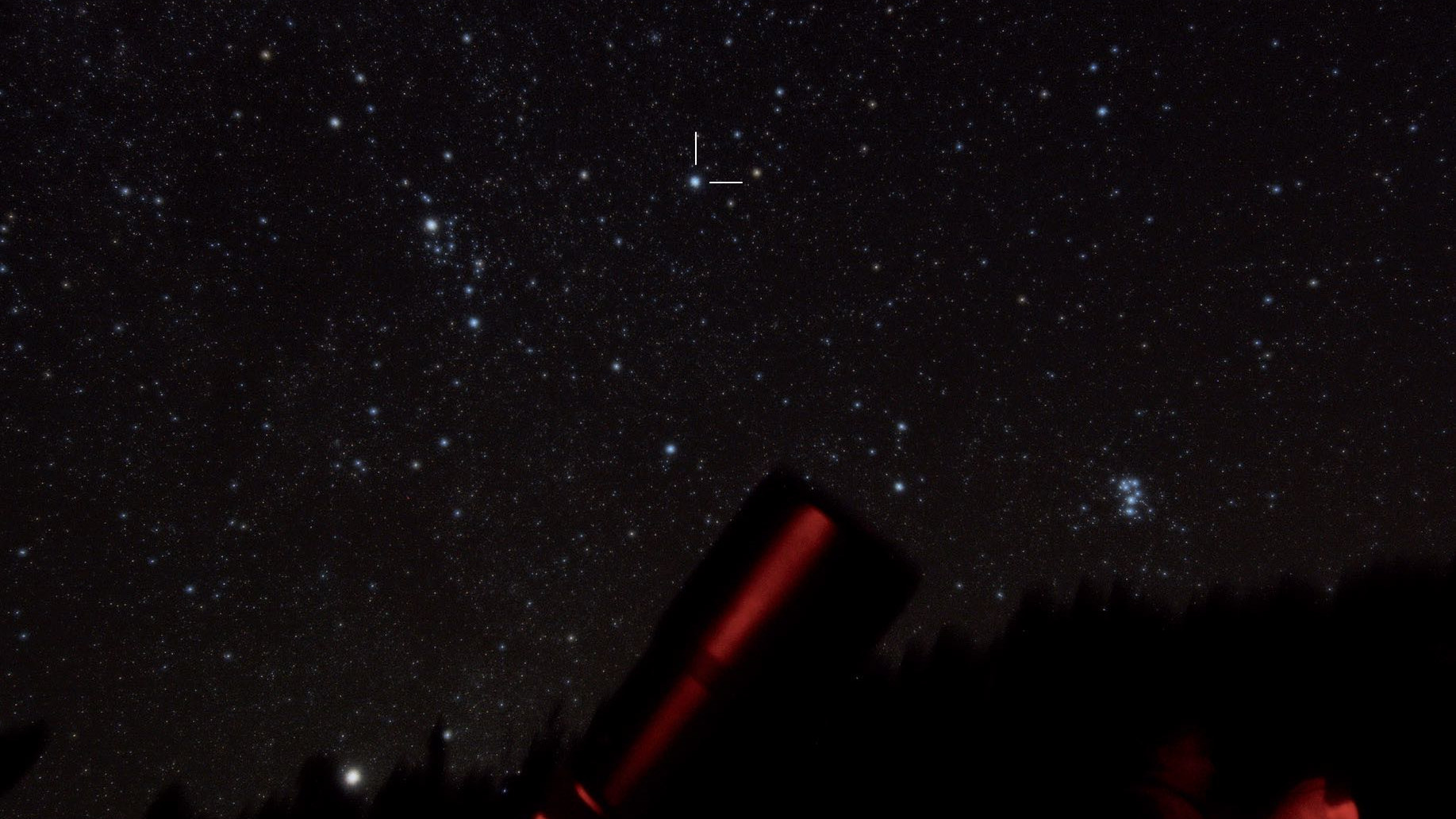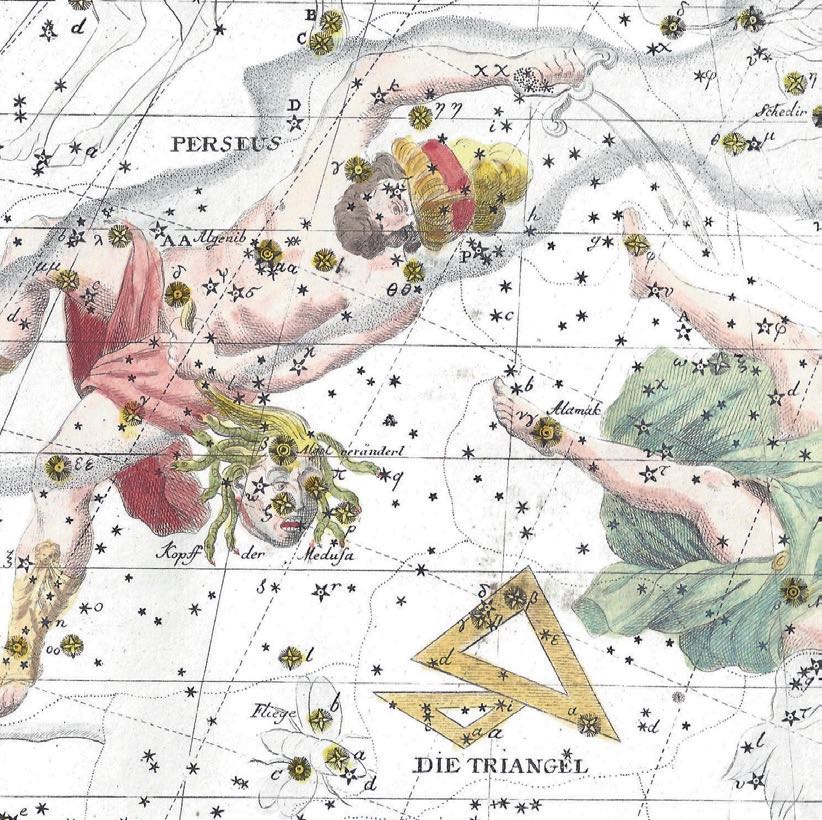Algol – the Demon Star in Perseus
Famous eclipsing binary whose brightness fluctuates by more than magnitude 1 in just under three days.
 Algol or β Persei is the second brightest star in the constellation of Perseus. Bernhard Hubl
Algol or β Persei is the second brightest star in the constellation of Perseus. Bernhard HublThose who have not yet consciously come face-to-face with variable stars should use the coming nights to convince themselves of just how fascinating this type of star really is. Because Algol (β Persei) in the constellation of Perseus is a particularly striking example of an eclipsing binary, whose fluctuations in brightness occur at short intervals and can therefore be easily observed in the city night sky.
Comparison stars as an observing aid
 Algol in plate III of Bode's star atlas (Vorstellung
der Gestirne), 2nd edition 1805. K-P. Julius
Algol in plate III of Bode's star atlas (Vorstellung
der Gestirne), 2nd edition 1805. K-P. JuliusWith its normal brightness of magnitude 2.1, Algol is clearly visible as the second brightest star in Perseus (after Mirfak or α Persei). It's a binary star system, with components that are are close together, and where a noticeable loss of brightness occurs when the fainter component passes in front of the brighter one. Particularly useful for observers: the light curve reaches its minimum every two days, 20 hours, 48 minutes and 56 seconds at magnitude 3.4, so that it is clearly noticeable. The "dark" phase of the transit takes about ten hours, so even impatient city astronomers have enough time to practice estimating the star’s magnitude.
Comparison stars, which are approximately as bright as Algol at the point of its minimum brightness, are useful for this estimation. The star ρ Persei, which lies only two degrees south, is a particularly suitable comparison neighbour at magnitude 3.4. If you are looking for a comparison star for the point of maximum brightness, you have to go a little further west up to γ Andromedae (mag. 2.2).
Author: Karl-Peter Julius / Licence: Oculum-Verlag GmbH
